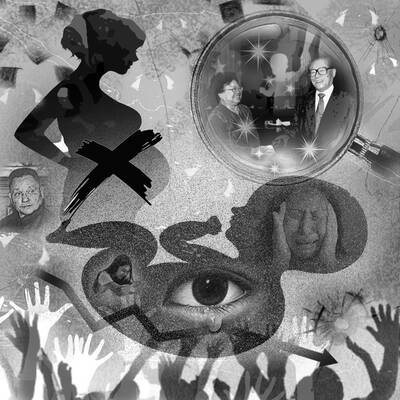As Democratic Progressive Party (DPP) Chairperson Tsai Ing-wen (蔡英文) prioritizes reforms to domestic policy and vows to make the “status quo” the focus of her cross-strait policy if she wins the presidential election next year, some people seem eager to play the “definition game” and are coaxing her into clarifying her definition of the “status quo.”
Sixty-five percent of Taiwanese say they find the idea of maintaining the so-called “status quo” in cross-strait relations acceptable, showing that a majority of the public share a basic understanding of what the “status quo” means: non-governmental exchanges between the two sides of the Taiwan Strait, but with no political relationship that gives either side jurisdiction over the other.
Taiwan certainly has no shortage of the prerequisites for defining a nation, and a vast majority of Taiwanese also recognize Taiwan as a nation. Everyone is well aware that the international community does not recognize the importance of maintaining the “status quo,” that the reason for this is based on these nations’ concerns for their own interests and that this is not something that Taiwan can change.
Tsai’s vow to maintain the “status quo” is not an attempt to resolve the cross-strait issue, but rather it is a response to public opinion and a matter of considering the concerns of friendly nations. If great importance was placed on providing a clear and explicit definition of the “status quo,” it would become useless as a tool for responding to changes in international relations.
There can in reality only be one cross-strait “status quo,” but Taiwan cannot stop others from having their own interpretation, as that interpretation itself is the core of the ongoing dispute.
To say that one wants to maintain the cross-strait “status quo” is compatible with the US’ opposition to unilaterally changing the “status quo.” Although the US’ stance remains positive, it should review and adjust its Taiwan policy based on the actual situation, legal concerns and democratic practices, and formally recognize the “status quo” of Taiwan’s democratic evolution.
On the other hand, China has nothing to lose in terms of maintaining the “status quo.” It would likely just issue a warning that if the DPP were to continue to insist on “Taiwan separatism,” as it did under former president Chen Shui-bian (陳水扁), it would be “impossible to resolve” the cross-strait situation.
Statements like this are tantamount to admitting that cross-strait relations are a matter of cross-party relations between the Chinese Nationalist Party (KMT) and the Chinese Communist Party (CCP), with Beijing warning Taiwan not to follow in the footsteps of Chen, and insisting that Taiwan follow the lead of President Ma Ying-jeou (馬英九), the KMT and the CCP.
Relying on the restrictions placed on Taiwan by the US, CCP and KMT elites are colluding in an attempt to form a “mutual agreement” by which Taiwan can be annexed, hence changing the “status quo.”
Nevertheless, faced with a strengthened Taiwanese local consciousness and the possibility of the DPP regaining power, Chinese President Xi Jinping (習近平) should know that KMT-CCP relations, which are not to the liking of a majority of Taiwanese, are likely to backfire.
James Wang is a media commentator.
Translated by Zane Kheir
We are used to hearing that whenever something happens, it means Taiwan is about to fall to China. Chinese President Xi Jinping (習近平) cannot change the color of his socks without China experts claiming it means an invasion is imminent. So, it is no surprise that what happened in Venezuela over the weekend triggered the knee-jerk reaction of saying that Taiwan is next. That is not an opinion on whether US President Donald Trump was right to remove Venezuelan President Nicolas Maduro the way he did or if it is good for Venezuela and the world. There are other, more qualified
The immediate response in Taiwan to the extraction of Venezuelan President Nicolas Maduro by the US over the weekend was to say that it was an example of violence by a major power against a smaller nation and that, as such, it gave Chinese President Xi Jinping (習近平) carte blanche to invade Taiwan. That assessment is vastly oversimplistic and, on more sober reflection, likely incorrect. Generally speaking, there are three basic interpretations from commentators in Taiwan. The first is that the US is no longer interested in what is happening beyond its own backyard, and no longer preoccupied with regions in other
As technological change sweeps across the world, the focus of education has undergone an inevitable shift toward artificial intelligence (AI) and digital learning. However, the HundrED Global Collection 2026 report has a message that Taiwanese society and education policymakers would do well to reflect on. In the age of AI, the scarcest resource in education is not advanced computing power, but people; and the most urgent global educational crisis is not technological backwardness, but teacher well-being and retention. Covering 52 countries, the report from HundrED, a Finnish nonprofit that reviews and compiles innovative solutions in education from around the world, highlights a

Jan. 1 marks a decade since China repealed its one-child policy. Just 10 days before, Peng Peiyun (彭珮雲), who long oversaw the often-brutal enforcement of China’s family-planning rules, died at the age of 96, having never been held accountable for her actions. Obituaries praised Peng for being “reform-minded,” even though, in practice, she only perpetuated an utterly inhumane policy, whose consequences have barely begun to materialize. It was Vice Premier Chen Muhua (陳慕華) who first proposed the one-child policy in 1979, with the endorsement of China’s then-top leaders, Chen Yun (陳雲) and Deng Xiaoping (鄧小平), as a means of avoiding the